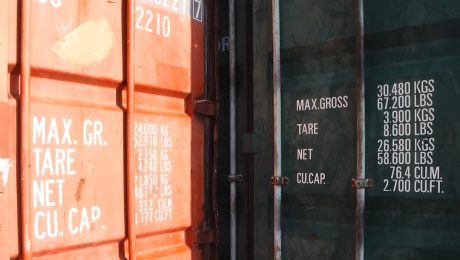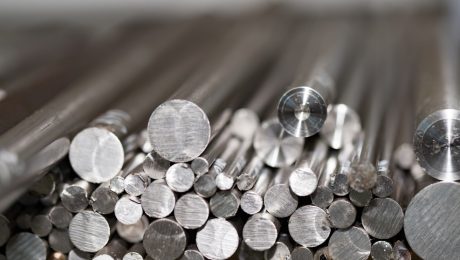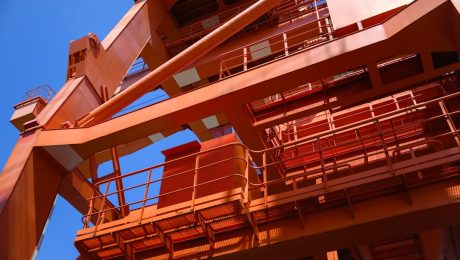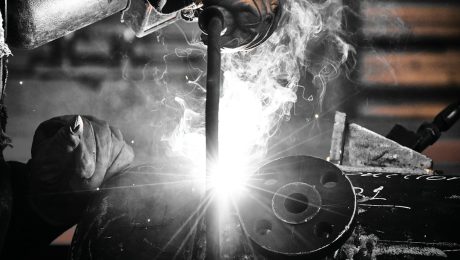Twisted square wire, with its unique strength and aesthetic appeal, offers a surprising range of applications beyond its initial perception. This robust material, often overlooked, provides a versatile solution for various projects, from intricate crafts to sturdy construction needs. This comprehensive guide delves into the diverse uses of twisted square wire, revealing its hidden potential.
1. Crafting and Jewelry Making: Unleashing Artistic Potential
Twisted square wire’s distinct texture and rigidity make it a popular choice for crafting and jewelry making. Its square profile allows for unique designs and intricate details not easily achievable with round wire. The twisting adds visual interest and strength, enhancing the overall aesthetic. Here are some specific applications:
- Wire wrapping: The strong, square profile holds gemstones and beads securely, creating durable and visually appealing jewelry pieces.
- Sculpting and armature creation: Its strength allows for the creation of intricate three-dimensional forms, providing a sturdy framework for various materials like clay, resin, or fabric.
- Basket weaving and intricate wirework: The square shape allows for interesting textures and patterns, offering a unique alternative to traditional basketry materials.
- Creating decorative elements: Twisted square wire can be easily shaped and bent to create decorative accents for various crafts, including cards, scrapbooking projects, and home décor.
The versatility of gauge sizes also allows for crafting projects ranging from delicate earrings to robust sculptures.
2. Construction and Industrial Applications: Strength and Durability
Beyond crafting, twisted square wire finds significant use in construction and industrial settings. Its high tensile strength and resistance to bending make it ideal for applications demanding durability and resilience. Some notable examples include:
- Reinforcement in concrete: Twisted square wire can be incorporated into concrete mixes to enhance tensile strength and prevent cracking, particularly in applications subjected to stress and vibration.
- Fence construction: Its strength and rigidity make it suitable for building robust and long-lasting fences, especially in areas with harsh weather conditions or potential animal interference.
- Mesh fabrication: Twisted square wire forms the basis for various types of wire mesh used in sieving, filtering, and security applications. The square shape provides consistent openings, ensuring uniform performance.
- Support structures: It can be used to create supporting structures for various applications, such as shelving, racks, and temporary scaffolding, offering a cost-effective and durable solution.
The choice of gauge will depend on the specific application, with heavier gauges used for more demanding tasks.
3. Gardening and Horticulture: Supporting Growth
Twisted square wire’s strength and flexibility also find applications in gardening and horticulture. Its ability to support plant growth without being too intrusive makes it a valuable tool for gardeners and horticulturalists. Examples include:
- Plant supports: Twisted square wire can be used to create sturdy supports for climbing plants, vegetables, and flowers, preventing damage and promoting healthy growth.
- Trellises and obelisks: It can be easily shaped and formed into trellises and obelisks, providing attractive and functional support structures for climbing plants.
- Cage creation: Twisted square wire can be used to create protective cages for young plants, shielding them from pests and harsh weather conditions.
- Wire plant markers: Durable and weather-resistant, it’s suitable for creating long-lasting plant markers that won’t easily break or fade.
The use of galvanized or coated twisted square wire is recommended for outdoor applications to prevent rust and corrosion.
4. DIY Projects and Home Improvement: Unleashing Creativity
The versatility of twisted square wire extends to a wide range of DIY projects and home improvement tasks. Its ease of manipulation and durability make it a popular choice for creative individuals and handy homeowners.
- Furniture making: Twisted square wire can be incorporated into furniture designs, adding unique visual elements and structural support.
- Home décor accents: It can be used to create decorative elements for walls, shelves, and other areas of the home, adding a touch of rustic or industrial style.
- Repair and maintenance: Its strength can be utilized for repairing damaged fences, gates, or other structures around the home.
- Custom shelving: Twisted square wire can be used to create custom shelving units, offering a unique and sturdy storage solution.
Remember to choose the appropriate gauge and type of wire based on the project’s specific requirements.
5. Choosing the Right Gauge and Material: A Guide to Selection
Selecting the appropriate gauge and material for twisted square wire is crucial for ensuring the success of any project. The gauge refers to the thickness of the wire, with lower gauges indicating thicker wire and higher gauges indicating thinner wire. Material selection depends on the intended application and environmental conditions.
- Gauge selection: Heavier gauges (lower numbers) are suitable for construction and industrial applications requiring high strength. Lighter gauges (higher numbers) are better suited for crafting and delicate projects.
- Material considerations: Galvanized steel offers excellent corrosion resistance, making it ideal for outdoor applications. Copper wire offers superior conductivity and is often used in electrical applications. Stainless steel provides exceptional strength and resistance to corrosion.
Careful consideration of these factors will ensure that the chosen twisted square wire meets the demands of the project and provides long-lasting performance.
Twisted square wire, though often underestimated, offers a surprisingly wide array of applications. By understanding its properties and selecting the appropriate gauge and material, you can unlock its full potential in crafting, construction, gardening, DIY projects, and more.
Tags:
twisted square wire, square wire uses, wire crafting, construction wire, DIY projects
In today’s interconnected world, businesses of all sizes rely on efficient global delivery processes to reach international markets and satisfy customers worldwide. This intricate process involves a complex network of players, technologies, and regulations. Understanding this process is crucial for both businesses aiming to expand globally and consumers anticipating their international orders.
1. Order Placement and Processing: The Starting Point
The global delivery journey begins with the customer placing an order. This seemingly simple act triggers a cascade of events. The order is processed by the seller’s system, verifying the customer’s details, payment information, and the availability of the product. This stage involves inventory management, order confirmation emails, and potentially fraud detection measures. Efficient order management systems are key to minimizing errors and delays at this crucial initial stage. Automation plays a significant role, streamlining the process and reducing manual intervention. Integration with various payment gateways and inventory management software is essential for a seamless transition to the next stage.
2. Packaging and Warehousing: Protecting Your Goods
Once the order is confirmed, the goods need to be carefully packaged for the journey ahead. This involves selecting appropriate packaging materials to protect the product from damage during transit. The packaging must comply with international shipping regulations, which can vary significantly depending on the destination country and the nature of the goods. Proper labeling, including clear addresses and customs declarations, is critical to avoid delays or customs issues. Warehousing plays a crucial role, providing a secure and organized space to store goods before shipping. Efficient warehouse management systems help optimize storage space, track inventory, and manage the picking and packing process. Strategic warehouse locations can significantly reduce transit times and costs.
3. Transportation and Customs Clearance: Navigating International Borders
This stage is arguably the most complex and challenging aspect of global delivery. The choice of transportation method – air freight, sea freight, or road transport – depends on factors like speed, cost, and the nature of the goods. Each method has its own advantages and disadvantages. Air freight is the fastest but most expensive, while sea freight is slower but more cost-effective for large volumes. Road transport is often used for regional deliveries. Regardless of the chosen method, navigating customs procedures is essential. This involves completing necessary customs declarations, paying duties and taxes, and ensuring compliance with import regulations of the destination country. Delays at customs can significantly impact delivery times, so accurate documentation and efficient customs brokerage services are crucial.
4. Last-Mile Delivery: The Final Leg of the Journey
The final leg of the journey involves the delivery of the goods to the customer’s doorstep. This “last-mile delivery” is often the most challenging part, particularly in densely populated urban areas. Various factors can impact last-mile delivery, including traffic congestion, weather conditions, and the availability of reliable delivery networks. Businesses often partner with local delivery companies or utilize technology such as route optimization software to ensure efficient and timely delivery. Real-time tracking and delivery notifications keep customers informed and improve transparency. The rise of e-commerce has placed immense pressure on last-mile delivery, leading to innovations such as drone delivery and autonomous vehicles.
5. Post-Delivery and Customer Service: Ensuring Satisfaction
The global delivery process doesn’t end with the delivery of the goods. Post-delivery customer service is crucial for building customer loyalty and addressing any potential issues. This includes providing tracking information, handling returns and refunds, and addressing customer inquiries. Efficient post-delivery processes can significantly improve customer satisfaction and brand reputation. Gathering customer feedback can also help identify areas for improvement in the overall global delivery process. Proactive communication and readily available customer support channels are essential for resolving any issues promptly and efficiently. Data analytics can be used to track delivery performance, identify bottlenecks, and optimize future deliveries.
The global delivery process is a dynamic and complex system that requires careful planning, coordination, and execution. By understanding the key stages, challenges, and best practices, businesses can optimize their global delivery operations, ensuring timely and efficient delivery of goods to customers worldwide.
SEO-Friendly Tags:
- Global Delivery
- International Shipping
- Supply Chain Management
- Cross-Border E-commerce
- Logistics and Delivery
body { font-family: sans-serif; line-height: 1.6; }
h1, h2, h3 { color: #333; }
code { background-color: #f0f0f0; padding: 2px 4px; border-radius: 4px; }
Cold drawn hexagonal bars are a vital component in numerous industries, offering a unique combination of strength, precision, and surface finish. This comprehensive guide will explore the intricacies of these versatile materials, from their manufacturing process to their diverse applications.
The Manufacturing Process of Cold Drawn Hexagonal Bars
Cold drawing is a metal forming process that enhances the mechanical properties of steel bars. Unlike hot rolling, which involves high temperatures, cold drawing takes place at room temperature. A hexagonal bar is initially produced through hot rolling, giving it a rougher surface and slightly oversized dimensions. This pre-formed bar is then subjected to a series of drawing operations. These operations involve pulling the bar through a series of successively smaller dies, reducing its diameter and simultaneously improving its surface finish and dimensional accuracy. The process increases the tensile strength and yield strength of the material through work hardening. Lubricants are crucial during cold drawing to reduce friction and prevent surface damage. The final product is a precisely sized hexagonal bar with a superior surface finish, ready for various applications.
Applications of Cold Drawn Hexagonal Bars: Where Strength Meets Precision
The exceptional properties of cold drawn hexagonal bars make them ideal for a wide range of applications demanding high strength and precision. These include:
- Automotive Industry: Used in transmission components, axles, and other high-stress parts requiring precise dimensions and high fatigue resistance.
- Aerospace Industry: Their high strength-to-weight ratio makes them suitable for aircraft components and other applications where weight reduction is critical.
- Construction and Engineering: Employed in structural components, fasteners, and other applications where durability and precise dimensions are essential.
- Machinery and Equipment Manufacturing: Used as shafts, spindles, and other components in various types of machinery.
- Hydraulic and Pneumatic Systems: Often used in the manufacturing of hydraulic cylinders and other components requiring high strength and resistance to wear.
Advantages of Choosing Cold Drawn Hexagonal Bars
Compared to other types of hexagonal bars, cold drawn bars offer several key advantages:
- Enhanced Mechanical Properties: The cold drawing process significantly improves tensile strength, yield strength, and hardness.
- Superior Surface Finish: Cold drawing produces a smoother, more precise surface finish, reducing the need for further machining.
- Improved Dimensional Accuracy: The process results in bars with tighter tolerances compared to hot-rolled bars.
- Excellent Straightness: Cold drawn bars typically exhibit superior straightness, crucial for many applications.
- Cost-Effectiveness: While the initial cost may be slightly higher, the superior surface finish and dimensional accuracy often reduce secondary machining costs, leading to overall cost savings.
Tolerances and Standards for Cold Drawn Hexagonal Bars
Cold drawn hexagonal bars are manufactured to precise tolerances, ensuring consistency and interchangeability. These tolerances are typically defined according to industry standards, such as those established by organizations like ASTM (American Society for Testing and Materials) and ISO (International Organization for Standardization). Commonly used standards specify tolerances for dimensions, straightness, and surface finish. The specific tolerances required will depend on the application and the customer’s specifications. Understanding these tolerances is critical for ensuring the proper functionality and performance of the final product. Deviation from specified tolerances can lead to assembly difficulties or even component failure.
Material Selection for Cold Drawn Hexagonal Bars: Steel Grades and Alloys
Cold drawn hexagonal bars are typically made from various grades of steel, each offering unique properties. The choice of material depends heavily on the intended application and the required mechanical properties. Common steel grades include:
- Low Carbon Steel: Suitable for applications requiring good machinability and weldability.
- Medium Carbon Steel: Offers a balance of strength, toughness, and machinability.
- High Carbon Steel: Provides high strength and wear resistance, ideal for demanding applications.
- Alloy Steels: Offer enhanced properties such as corrosion resistance, increased strength, or improved toughness depending on the alloying elements.
- Stainless Steels: Used when corrosion resistance is paramount.
Selecting the appropriate steel grade is crucial for ensuring the component meets the required performance criteria and has the necessary lifespan. The selection process often involves considering factors such as tensile strength, yield strength, hardness, impact resistance, and fatigue strength.
Choosing the right cold drawn hexagonal bar is a critical decision impacting the success of any project. By understanding the manufacturing process, applications, advantages, tolerances, and available materials, engineers and manufacturers can make informed decisions to optimize performance and cost-effectiveness.
Tags: Cold drawn hexagonal bars, hexagonal steel bars, cold drawn steel, steel bar manufacturing, mechanical properties of steel
User Account Control (UAC) is a crucial security feature in modern Windows operating systems. It helps prevent malicious software and unauthorized changes by requiring administrator privileges for certain actions. Understanding UAC profile specifications is key to managing system security effectively and tailoring it to your specific needs. This guide delves deep into the intricacies of UAC, explaining its different settings and how they impact user experience and system protection.
Understanding the Core UAC Settings and Levels
UAC operates on a tiered system, allowing you to adjust the level of control based on your security preferences and comfort level. The core setting, found in the User Accounts section of the Control Panel (or via lusrmgr.msc), offers four primary levels:
- Never Notify: This setting disables UAC entirely. It’s generally discouraged due to significantly increased security risks. Any program can make changes without prompting the user.
- Always Notify: This is the most restrictive setting. UAC will prompt you for confirmation before *every* change requiring administrator privileges, even seemingly minor ones. This can be disruptive but offers the highest level of security.
- Notify me only when programs try to make changes to my computer: This is the default setting for many users. It prompts you for elevation only when applications attempt to modify system files or settings.
- Notify me only when apps try to make changes to my computer (Don’t dim the screen): This is similar to the previous setting, but removes the screen dimming effect during the UAC prompt.
These settings are crucial for balancing security and user convenience. Choosing the right level depends on your individual risk assessment and technical proficiency.
Managing User Accounts and Their UAC Privileges
Beyond the system-wide UAC level, individual user accounts also play a significant role. Standard user accounts have limited privileges, preventing them from making system-wide changes without administrator approval. Administrator accounts, on the other hand, have full control and bypass most UAC prompts. Properly managing user accounts is essential for maintaining a secure system:
- Standard User Accounts: These accounts are ideal for everyday tasks, limiting the potential damage from malware or accidental system modifications. They require administrator approval for almost all system-level changes.
- Administrator Accounts: These accounts should be used cautiously. While providing full control, they also bear the highest risk. Compromising an administrator account compromises the entire system.
- Guest Accounts: Guest accounts offer limited access, primarily for temporary use. They are often restricted from making any significant changes.
Creating separate accounts for different users, assigning appropriate privileges, and using strong passwords are fundamental security practices.
Advanced UAC Configuration and Registry Tweaks (Proceed with Caution!)
While the standard UAC settings provide sufficient control for most users, advanced configurations are possible through registry editing. This should only be attempted by experienced users who understand the potential consequences. Incorrect registry modifications can severely damage your system.
Modifying the registry can allow for granular control over specific applications and their UAC behavior. For instance, you can configure specific programs to always run with administrator privileges or always run as a standard user, bypassing the UAC prompt entirely. However, this requires a deep understanding of the registry and potential security implications. Always back up your registry before making any changes.
Troubleshooting Common UAC Issues and Error Messages
UAC, while beneficial, can occasionally cause issues. Understanding common problems and their solutions is crucial:
- UAC prompts appearing too frequently: This could be due to poorly coded applications or malware. Running a malware scan and updating applications are often helpful solutions.
- UAC prompts failing to appear: This might indicate a problem with the UAC settings or a system malfunction. Checking UAC settings and performing a system file check (
sfc /scannow) are potential remedies. - Applications failing to run due to insufficient privileges: This is often a legitimate UAC security measure. Right-clicking the application and selecting “Run as administrator” can resolve the issue, but only if you trust the application.
Careful observation of error messages and a systematic approach to troubleshooting are vital for resolving UAC-related problems.
Best Practices for Secure UAC Management
Effective UAC management is a crucial part of overall system security. Here are some best practices:
- Use strong passwords: Protect all user accounts with strong, unique passwords.
- Regularly update your system: Windows updates often include UAC improvements and security patches.
- Use reputable antivirus software: Protect your system from malware that could exploit UAC vulnerabilities.
- Avoid disabling UAC completely: Unless absolutely necessary, keep UAC enabled to maintain a reasonable level of security.
- Educate users: Ensure users understand the importance of UAC and how to respond appropriately to prompts.
By following these best practices, you can significantly enhance the security of your Windows system.
This comprehensive guide offers a deeper understanding of UAC profile specifications. Remember, balancing security and usability is key. Choose the UAC settings that best suit your needs and always prioritize responsible security practices.
Steel, a material synonymous with strength and durability, continues to be a cornerstone of modern construction and engineering. Its versatility allows for innovative solutions across a vast array of industries, from towering skyscrapers to intricate medical devices. This blog post delves into five compelling case studies that highlight the remarkable applications of steel and showcase its enduring relevance in a constantly evolving world.
1. The Burj Khalifa: A Testament to High-Strength Steel
The Burj Khalifa, the world’s tallest building, stands as a breathtaking testament to the capabilities of high-strength steel. Its construction presented unprecedented engineering challenges, demanding materials capable of withstanding immense pressure and wind loads at extreme heights. The solution involved the use of specialized high-strength steel alloys, meticulously designed to provide exceptional strength-to-weight ratios. These alloys, combined with advanced construction techniques, allowed engineers to create a structure that not only reaches unparalleled heights but also maintains exceptional stability and resilience against seismic activity. The detailed calculations and precise fabrication involved in the Burj Khalifa’s steel framework highlight the critical role of advanced steel metallurgy and structural engineering in pushing the boundaries of architectural design.
2. Innovative Steel Bridges: Balancing Aesthetics and Functionality
Modern bridge design often prioritizes a harmonious blend of aesthetics and functionality. The Millau Viaduct in France, for instance, showcases the elegance and strength achievable with steel. Its slender, cable-stayed design utilizes high-tensile steel cables and a lightweight steel deck structure, minimizing environmental impact while maximizing structural integrity. This case study demonstrates how advanced steel alloys and sophisticated engineering principles can create visually stunning structures that withstand the rigors of daily traffic and harsh environmental conditions. Furthermore, the use of weathering steel, which develops a protective rust layer, minimizes maintenance needs, making it a cost-effective and sustainable choice for long-span bridges.
3. Sustainable Steel Solutions in Green Buildings
The construction industry is increasingly focused on sustainable practices, and steel plays a vital role in achieving green building certifications. Steel is 100% recyclable, and its inherent strength allows for lighter, more efficient structures, reducing the overall material footprint. Case studies of LEED-certified buildings demonstrate the effectiveness of steel in minimizing embodied carbon and maximizing energy efficiency. The use of recycled steel content in construction further contributes to environmental sustainability. Moreover, steel’s durability and longevity reduce the need for frequent replacements, lessening the overall life-cycle environmental impact.
4. Steel in Offshore Wind Turbine Construction
The global transition towards renewable energy sources relies heavily on offshore wind power. The construction of offshore wind turbines presents unique challenges, requiring materials with exceptional strength and resistance to corrosion. Steel, particularly high-strength, corrosion-resistant grades, is the material of choice for the turbine towers, foundations, and substructures. Case studies of large-scale offshore wind farms demonstrate the crucial role of steel in withstanding the harsh marine environment, ensuring the long-term operational reliability of these renewable energy installations. The design and fabrication of these steel structures require advanced welding and coating techniques to prevent corrosion and ensure optimal performance in demanding conditions.
5. Advanced Steel Applications in the Automotive Industry
The automotive industry is constantly striving for lighter, safer, and more fuel-efficient vehicles. Advanced high-strength steel (AHSS) alloys play a critical role in achieving these goals. AHSS offers superior strength and formability compared to traditional steel grades, allowing automakers to create lighter vehicle bodies while maintaining or enhancing safety standards. Case studies of modern vehicle designs highlight the use of AHSS in critical structural components, such as the B-pillar and side impact beams, significantly improving crashworthiness. Moreover, the use of AHSS contributes to improved fuel economy by reducing vehicle weight, leading to lower emissions and enhanced environmental performance.
These case studies demonstrate the versatility and enduring importance of steel in various sectors. From iconic skyscrapers to sustainable infrastructure and advanced manufacturing, steel continues to be a fundamental material, driving innovation and shaping the built environment.
SEO Keywords:
Steel solutions, steel case studies, high-strength steel, sustainable steel, steel construction
The unobtrusive networks of water and gas pipes beneath our streets are vital lifelines, ensuring the smooth functioning of our homes and businesses. However, the reliability and safety of these systems hinge on adherence to stringent quality standards. From the materials used to the rigorous testing procedures employed, maintaining these standards is paramount to preventing leaks, bursts, and potentially hazardous situations. This post delves into the crucial aspects of quality control in water and gas pipe infrastructure.
Material Matters: Choosing the Right Stuff for Water and Gas Pipes
The choice of material significantly impacts a pipe’s lifespan, durability, and resistance to corrosion. Water pipes commonly utilize materials like copper, PVC (polyvinyl chloride), CPVC (chlorinated polyvinyl chloride), polyethylene (PE), and ductile iron. Each material possesses unique properties: Copper offers excellent corrosion resistance and longevity but can be expensive. PVC and CPVC are cost-effective and corrosion-resistant but have lower temperature tolerances. PE is flexible and suitable for underground applications, while ductile iron provides high strength and durability, particularly for larger diameter pipes. Gas pipes, due to the flammability of natural gas, often employ high-density polyethylene (HDPE), steel (often coated for corrosion protection), and sometimes cast iron for specific applications. The selection process considers factors like pressure, temperature, soil conditions, and the intended lifespan of the pipeline.
Rigorous Testing: Ensuring Pipeline Integrity
Once the pipe materials are selected, rigorous testing is crucial to ensure they meet the specified quality standards. These tests vary depending on the material and intended application. For instance, water pipes undergo pressure tests to determine their burst strength and resistance to leakage. Non-destructive testing methods, such as ultrasonic testing and radiographic testing, are employed to detect internal flaws or weaknesses without damaging the pipe. Gas pipes undergo similar pressure testing, often at higher pressures to account for the potential energy of the gas. Furthermore, leak detection tests are essential to identify any potential points of failure. These tests are conducted at various stages of the manufacturing process and before installation to guarantee that the pipes conform to the required standards.
Regulatory Compliance: Navigating the Legal Landscape of Pipeline Installation
The installation and maintenance of water and gas pipes are subject to a complex web of regulations and codes designed to ensure public safety and prevent environmental damage. These regulations vary by jurisdiction but often incorporate national or international standards, such as those published by organizations like ASTM International (American Society for Testing and Materials) and ISO (International Organization for Standardization). These standards specify acceptable materials, installation practices, and testing procedures. Compliance with these regulations is mandatory, and failure to adhere to them can result in significant penalties and legal repercussions. Regular inspections and maintenance are also mandated to ensure the continued integrity of the pipelines.
The Impact of Poor Quality: Understanding the Consequences
The consequences of using substandard materials or failing to adhere to quality standards can be severe. Leaks in water pipes can lead to water damage, property damage, and costly repairs. In the case of gas pipes, leaks can pose a significant fire hazard and even lead to explosions. Furthermore, poor quality pipes can contribute to premature failure, requiring costly replacements and disruption to service. The long-term economic and social costs associated with inadequate pipeline infrastructure far outweigh the initial investment in quality materials and proper installation techniques. This underscores the importance of prioritizing quality control throughout the entire pipeline lifecycle.
Advanced Technologies: Enhancing Pipeline Performance and Safety
Technological advancements are continuously improving the quality and safety of water and gas pipes. Smart sensors embedded within pipes can monitor pressure, flow rate, and temperature in real-time, providing early warnings of potential problems. Advanced leak detection systems can pinpoint leaks quickly and accurately, minimizing damage and downtime. The use of new materials, such as composite pipes and advanced polymers, is expanding the range of options for pipeline construction, offering improved durability, corrosion resistance, and flexibility. These technological innovations are crucial in enhancing the reliability and safety of water and gas distribution networks, contributing to a more sustainable and resilient infrastructure.
In conclusion, maintaining high quality standards in water and gas pipes is not merely a matter of cost-effectiveness; it’s a critical aspect of ensuring public safety, protecting the environment, and maintaining the essential services that underpin modern life. By adhering to strict material specifications, rigorous testing protocols, and comprehensive regulatory frameworks, we can ensure the longevity, reliability, and safety of these vital lifelines for generations to come.
Tags: water pipes, gas pipes, pipeline safety, plumbing regulations, pipe materials
Structural steel has been a cornerstone of construction for centuries, and for good reason. Its versatility, strength, and efficiency make it a top choice for architects, engineers, and builders across the globe. This post delves into the numerous benefits of using structural steel, exploring why it remains a dominant force in modern construction.
Unmatched Strength and Durability: The Foundation of Steel’s Success
The primary advantage of structural steel is its exceptional strength-to-weight ratio. This means that steel can support significant loads while remaining relatively lightweight compared to other materials like concrete or timber. This characteristic is crucial in high-rise buildings, bridges, and other large-scale structures where minimizing weight is essential for structural integrity and stability. Steel’s high tensile strength allows it to withstand significant forces without deformation, ensuring the longevity and safety of the structure. Furthermore, steel’s inherent durability means it can resist corrosion and wear, requiring minimal maintenance over its lifespan. While susceptible to rust, advancements in protective coatings and galvanization significantly extend its lifespan and reduce maintenance needs.
Flexibility and Design Versatility: Shaping the Future of Construction
Steel’s malleability offers unparalleled design flexibility. It can be easily shaped, bent, and welded into intricate forms, allowing architects and engineers to create complex and aesthetically pleasing structures. This flexibility extends to both large-scale projects and smaller-scale applications. From the graceful curves of modern stadiums to the intricate details of interior frameworks, steel’s adaptability makes it a versatile material for any project. The prefabrication of steel components also contributes to its flexibility. Components can be manufactured off-site and then assembled on-site, speeding up construction time and reducing disruptions. This prefabrication also allows for greater precision and quality control.
Cost-Effectiveness and Time Savings: A Smart Investment in Construction
While the initial cost of steel might seem higher than some alternatives, its long-term cost-effectiveness is undeniable. The speed of construction using steel significantly reduces labor costs and project timelines. Prefabrication, as mentioned earlier, plays a significant role in this efficiency. The reduced construction time translates to faster project completion and quicker return on investment. Furthermore, steel structures require less maintenance compared to other materials, further contributing to long-term cost savings. The durability of steel ensures the structure’s longevity, minimizing the need for costly repairs or replacements in the future. The ease of recycling steel also contributes to its overall cost-effectiveness, making it a sustainable choice.
Sustainability and Environmental Responsibility: Building a Greener Future
Contrary to popular misconceptions, structural steel is a remarkably sustainable material. Steel is 100% recyclable without losing its inherent properties. This makes steel a circular material, reducing the demand for virgin resources and minimizing waste sent to landfills. The recyclability of steel significantly reduces its carbon footprint compared to materials that cannot be easily recycled. Moreover, advancements in steel production are continually improving its environmental profile, with efforts focused on reducing energy consumption and emissions during the manufacturing process. The durability of steel also contributes to its sustainability, as longer-lasting structures reduce the need for frequent replacements and associated environmental impacts.
Safety and Resilience: Ensuring Structural Integrity and Peace of Mind
Steel’s high strength and resilience make it a safe and reliable material for construction. Its ability to withstand extreme weather conditions, seismic activity, and other potential hazards ensures the safety and protection of occupants. Rigorous testing and quality control measures throughout the steel production and construction processes further enhance safety. Steel structures are designed and engineered to withstand significant loads and stresses, minimizing the risk of structural failure. The inherent fire resistance of steel, especially when protected by appropriate coatings, provides additional safety and peace of mind. This contributes to the overall safety and resilience of steel structures, making them a preferred choice for critical infrastructure and high-occupancy buildings.
In conclusion, the benefits of structural steel are multifaceted and compelling. From its unparalleled strength and durability to its cost-effectiveness and sustainability, steel remains a leading material in the construction industry. Its versatility and design flexibility allow for innovative and aesthetically pleasing structures, while its inherent safety and resilience provide peace of mind. Choosing structural steel is choosing a smart, sustainable, and enduring investment.
Tags: structural steel, steel construction, steel benefits, sustainable building materials, construction materials
Boiler tubes, often overlooked, are the critical components responsible for efficient heat transfer in power generation, industrial processes, and heating systems. These seemingly simple tubes are at the heart of complex systems, enduring extreme temperatures and pressures. Understanding their technology and use is crucial for optimal performance, safety, and longevity. This comprehensive guide delves into the world of boiler tubes, exploring their materials, manufacturing, applications, maintenance, and future trends.
1. Materials Science: The Backbone of Boiler Tube Strength
The choice of material for boiler tubes is paramount, dictated by the operating conditions – primarily temperature and pressure. Several materials are commonly used, each with its own strengths and weaknesses:
- Carbon Steel: Cost-effective and widely used in low-pressure applications, carbon steel tubes offer good strength but are susceptible to corrosion and scaling at higher temperatures.
- Alloy Steel: Containing alloying elements like chromium, molybdenum, and vanadium, alloy steels offer enhanced strength, creep resistance, and corrosion resistance at elevated temperatures. They are commonly used in high-pressure boilers.
- Stainless Steel: Known for their excellent corrosion resistance, stainless steel tubes, particularly those with higher chromium content, are ideal for applications involving aggressive chemicals or high-purity water.
- Nickel-based Alloys: Used in extremely high-temperature and high-pressure applications, such as those found in power plants and petrochemical industries, these alloys offer exceptional creep resistance and corrosion resistance.
The selection process considers factors like operating temperature, pressure, corrosive environment, and the desired lifespan of the boiler.
2. Manufacturing Processes: Precision Engineering for Optimal Performance
The manufacturing of boiler tubes is a precise process requiring stringent quality control. Common methods include:
- Seamless Tubes: Manufactured by piercing and rolling a solid billet, seamless tubes offer superior strength and resistance to fatigue compared to welded tubes. They are preferred for high-pressure applications.
- Welded Tubes: Produced by joining two edges of a steel strip, welded tubes are generally less expensive than seamless tubes. Advanced welding techniques ensure high-quality welds, making them suitable for many applications.
- Expanded Tubes: These tubes are produced by expanding a smaller diameter tube to a larger size, often used in heat exchangers.
After manufacturing, tubes undergo rigorous testing to ensure they meet the required specifications for diameter, wall thickness, and metallurgical properties. Non-destructive testing methods, such as ultrasonic testing and eddy current testing, are crucial in detecting defects.
3. Applications Across Industries: Powering Diverse Sectors
Boiler tubes find application across a wide range of industries:
- Power Generation: Boiler tubes are the workhorses of power plants, facilitating the transfer of heat from combustion to water, generating steam to drive turbines.
- Industrial Processes: Industries such as petrochemicals, refineries, and chemical plants use boiler tubes in heat exchangers and other process equipment.
- Heating Systems: Boiler tubes are integral components in large-scale heating systems for buildings and industrial facilities.
- Waste Heat Recovery: Boiler tubes can recover waste heat from industrial processes, improving efficiency and reducing energy consumption.
The specific type of boiler tube used depends on the application’s unique requirements, ensuring optimal performance and safety.
4. Maintenance and Inspection: Extending Boiler Tube Lifespan
Regular maintenance and inspection are vital for extending the lifespan of boiler tubes and preventing costly failures. Key aspects include:
- Internal Inspections: Using advanced techniques like borescopes and video probes to detect internal corrosion, erosion, and scaling.
- External Inspections: Visual inspections to identify external corrosion, fouling, and damage.
- Chemical Cleaning: Regular cleaning to remove deposits and prevent scaling, improving heat transfer efficiency.
- Predictive Maintenance: Employing advanced techniques like vibration analysis and thermal imaging to detect potential problems before they escalate.
Implementing a comprehensive maintenance program can significantly reduce the risk of boiler tube failures and optimize operational efficiency.
5. Future Trends in Boiler Tube Technology: Innovations for Enhanced Performance
Ongoing research and development are driving innovations in boiler tube technology:
- Advanced Materials: Development of new materials with enhanced strength, creep resistance, and corrosion resistance at even higher temperatures and pressures.
- Improved Manufacturing Techniques: Adoption of advanced manufacturing processes to produce tubes with improved precision and quality.
- Smart Monitoring Systems: Integration of sensors and data analytics to enable real-time monitoring of boiler tube conditions and predict potential failures.
- Sustainable Materials: Focus on developing more sustainable and environmentally friendly materials for boiler tubes.
These advancements will lead to more efficient, reliable, and sustainable power generation and industrial processes.
Tags: boiler tubes, boiler tube technology, power generation, heat exchangers, industrial boilers
body {
font-family: sans-serif;
line-height: 1.6;
}
h1, h2, h3 {
color: #333;
}
The steel industry operates on precision and reliability. Meeting stringent quality standards is paramount, ensuring structural integrity, safety, and longevity in countless applications. The American Society for Testing and Materials (ASTM) provides a crucial framework for this, establishing a comprehensive set of standards that govern steel production and testing. This post delves into the critical aspects of ASTM compliance in steel production, highlighting its importance and practical implications.
Understanding ASTM Standards for Steel
ASTM International develops and publishes voluntary consensus standards for materials, products, systems, and services. In the steel industry, these standards cover a vast range of properties, including chemical composition, mechanical properties (tensile strength, yield strength, elongation, hardness), impact resistance, weldability, and microstructure. Specific ASTM designations, such as A36, A572, A992, and many others, define the precise requirements for different grades of steel, tailored to their intended applications. These standards aren’t just guidelines; they are often referenced in building codes, engineering specifications, and contractual agreements, making compliance mandatory for many projects.
Critical Testing Methods in ASTM Compliance
ASTM compliance necessitates rigorous testing throughout the steel production process. These tests verify that the steel meets the specified requirements of the relevant standard. Common testing methods include:
- Chemical Analysis: Determining the precise composition of elements like carbon, manganese, silicon, phosphorus, and sulfur using techniques like spectroscopy or wet chemical analysis.
- Tensile Testing: Measuring the ultimate tensile strength, yield strength, elongation, and reduction in area to assess the steel’s ability to withstand tensile loads.
- Impact Testing: Evaluating the steel’s resistance to fracture under impact loading using Charpy or Izod tests, crucial for applications subject to shock or impact.
- Hardness Testing: Determining the steel’s resistance to indentation using methods like Rockwell, Brinell, or Vickers hardness tests, providing an indication of strength and wear resistance.
- Bend Testing: Assessing the steel’s ductility and ability to deform plastically without fracturing.
- Macro and Microstructural Examination: Analyzing the steel’s internal structure using visual inspection (macro) and microscopic techniques (micro) to identify defects and assess grain size and uniformity.
Adherence to the specified ASTM test methods is crucial for ensuring the accuracy and reliability of the results.
Quality Control and Assurance in ASTM-Compliant Steel Production
Maintaining ASTM compliance requires a robust quality control (QC) and quality assurance (QA) system. This involves implementing procedures to monitor every stage of the production process, from raw material inspection to finished product testing. QC focuses on in-process control, ensuring that each step adheres to the specified standards. QA encompasses a broader perspective, verifying the effectiveness of the QC system and ensuring that the final product consistently meets the required specifications. This often includes regular audits, internal reviews, and maintaining detailed records of all testing and inspection activities. Statistical process control (SPC) techniques are frequently used to identify trends and prevent potential deviations from the desired quality levels.
Certification and Traceability in ASTM-Compliant Steel
Certification provides independent verification that the steel produced meets the relevant ASTM standards. Third-party certification bodies conduct audits and testing to ensure that manufacturers adhere to the required procedures and that their products meet the specified requirements. Traceability is equally important, allowing for the tracking of steel from its raw material origins through the entire production process to the final product. This ensures that in case of any issues, the source of the problem can be identified quickly and efficiently. A robust traceability system relies on detailed documentation, barcoding, and other tracking methods.
Consequences of Non-Compliance with ASTM Standards
Failure to comply with ASTM standards can have serious consequences. In the worst-case scenario, non-compliant steel can lead to structural failures, resulting in property damage, injuries, or even fatalities. Beyond safety concerns, non-compliance can result in significant financial losses. Projects may be delayed or halted, requiring costly rework or replacement of defective materials. Reputational damage can also be substantial, impacting future business opportunities. Legal repercussions, including lawsuits and fines, are also a possibility. Therefore, maintaining ASTM compliance is not merely a matter of best practice; it’s a critical necessity for ethical and responsible steel production.
In conclusion, ASTM compliance is fundamental to the integrity and safety of steel products. By adhering to the established standards, employing rigorous testing methods, implementing effective quality control systems, and ensuring proper certification and traceability, the steel industry can deliver high-quality products that meet the demands of diverse applications while maintaining safety and reliability.
SEO Tags:
- ASTM Steel Standards
- Steel Quality Control
- ASTM Compliance in Steel Production
- Steel Material Testing
- Steel Certification
At GloballSteel, we don’t just produce steel; we forge excellence. Our unwavering commitment to quality is the cornerstone of our success, underpinned by a robust and comprehensive Quality Management System (QMS). This system ensures that every product leaving our facilities meets the highest industry standards and exceeds our customers’ expectations. This blog post will delve into the key aspects of our QMS, highlighting our dedication to providing superior steel products.
ISO 9001:2015 Certification: The Foundation of Our QMS
Our QMS is built upon the internationally recognized ISO 9001:2015 standard. This certification demonstrates our commitment to consistently meeting customer and regulatory requirements. The ISO 9001 framework provides a structured approach to quality management, encompassing all aspects of our operations, from initial design and raw material sourcing to final product delivery and ongoing customer support. Achieving and maintaining this certification requires rigorous internal audits, regular management reviews, and continuous improvement initiatives. Our certification is a testament to our dedication to delivering consistently high-quality steel products and services.
Rigorous Testing and Inspection Procedures: Ensuring Product Integrity
GloballSteel employs a multi-layered approach to testing and inspection, ensuring the integrity and quality of our steel products at every stage of production. From incoming raw material inspections to rigorous testing of finished goods, our dedicated quality control team meticulously monitors each process. We utilize state-of-the-art testing equipment, including tensile testing machines, hardness testers, and chemical analysis instruments, to verify compliance with specified standards and customer requirements. Our detailed inspection reports provide complete traceability and transparency, allowing us to identify and address any potential issues promptly and effectively. This rigorous approach minimizes defects and ensures that only the highest quality steel reaches our customers.
Supply Chain Management: Partnering for Quality
Recognizing that quality begins with the source, GloballSteel meticulously manages its supply chain. We collaborate closely with our suppliers, selecting only those who share our commitment to quality and adhere to stringent ethical standards. Our supplier selection process involves thorough assessments of their capabilities, quality systems, and environmental practices. We maintain ongoing communication and collaboration with our suppliers, ensuring consistent quality and timely delivery of raw materials. This proactive approach to supply chain management minimizes risks and ensures that the quality of our inputs directly contributes to the quality of our outputs.
Continuous Improvement: A Commitment to Excellence
At GloballSteel, we believe that continuous improvement is essential for maintaining our competitive edge and delivering exceptional quality. Our QMS incorporates a robust system for identifying areas for improvement, analyzing root causes of defects, and implementing corrective and preventive actions. We regularly conduct internal audits, customer feedback surveys, and management reviews to identify opportunities for optimization. This data-driven approach allows us to continuously refine our processes, enhance our efficiency, and ultimately deliver superior products and services. Our commitment to continuous improvement is an ongoing journey, reflecting our dedication to exceeding expectations.
Customer Focus: Delivering Superior Steel Solutions
Our QMS is ultimately driven by a deep commitment to customer satisfaction. We understand that our customers rely on us to deliver high-quality steel products that meet their specific needs and expectations. We actively solicit customer feedback through surveys, direct communication, and regular performance reviews. This feedback is crucial in identifying areas for improvement and ensuring that our QMS remains aligned with customer requirements. Our customer-centric approach extends beyond product delivery; we strive to build strong, lasting relationships based on trust, transparency, and mutual success. We believe that by focusing on our customers’ needs, we can deliver superior steel solutions that drive their success.
GloballSteel’s commitment to quality is not just a policy; it’s a deeply ingrained culture that permeates every aspect of our operations. Our robust QMS, combined with our dedicated team and advanced technologies, ensures that we consistently deliver the highest quality steel products and services to our valued customers.
SEO-Friendly Tags:
- Quality Management System
- ISO 9001
- Steel Manufacturing
- Quality Control
- GloballSteel










